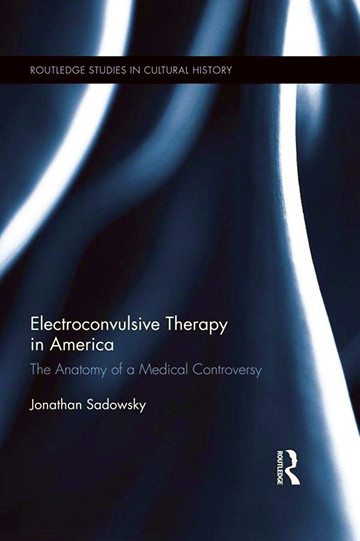Few treatments have generated as much controversy in the history of U.S. medicine as electroconvulsive therapy (ECT). In this deceptively slim volume, historian Jonathan Sadowsky places these debates at the center of his analysis. Sadowsky’s achievement is remarkable: a thorough and fair recounting of ECT’s origins, its evolution, and the reasons for its polarizing status in American medicine and culture.
Sadowsky situates ECT within two distinct medical traditions: first, the long history of using electricity to treat functional nervous complaints; and second, the modern “shock therapies” (insulin coma, metrazol shock), compared to which ECT was regarded by most early proponents as a distinct improvement. Psychoanalytically inclined practitioners interpreted ECT as a self-imposed punishment that relieved the patient’s ego from the internal punishment of the superego; on this theory, the associated seizure was superfluous. Others wondered if the memory loss that typically accompanied treatment might actually be integral to its efficacy. Psychiatrists agreed, though, that it worked. Although ECT was initially developed as a treatment for psychosis, it rapidly became apparent that it was more effective for disorders of mood and affect. ECT went into eclipse during the 1960s and 1970s—the heyday of the new psychopharmacology—but enjoyed a resurgence beginning in the 1980s. Among the heroic treatments of the interwar period, only ECT has survived into the era of randomized clinical trials and modern biomedical psychiatry.
Sadowsky argues that contemporary resistance to ECT is based not in cultural misrepresentation but rather on the very real history of ECT’s use as a tool of abuse and repression. It is true that ECT occupies a significant position in the discourse of antipsychiatry, nowhere more so than in Milos Forman’s 1975 film adaptation of Ken Kesey’s One Flew Over the Cuckoo’s Nest (1962). As Sadowsky demonstrates, however, ECT was also used as a means of enforcing discipline on overcrowded hospital wards in the prepsychopharmacological era. Indeed, managing disruptive behavior was closely identified with therapy in this context. Sadowsky also reviews D. Ewen Cameron’s unsettling use of ECT and mind-altering drugs to induce an organic regression that would allow him to reconstruct a patient’s personality along healthier lines. The long history of opposition to ECT thus does not derive solely from irrational bias or naive misunderstanding; rather, it emerges from the historical experience of countless men and women for whom ECT was a means of enforcing behavioral discipline or cultural normativity.
This argument is all the more compelling in the context of Sadowsky’s abiding conclusion that ECT offers genuine and lasting relief from psychological distress. His conclusion is based as much on narrative evidence contained in the memoirs of individual men and women who benefited from ECT as it is on conventional sources in the scientific literature. While early memoirists decried involuntary treatment and inadequate warning of potential memory loss, later autobiographical accounts commingled gratitude for the relief that ECT offered with an element of bitterness over the cognitive side effects that it often carried. Given the scientific literature’s insistence that lingering memory impairment is rare, Sadowsky quite reasonably asks why it figures so prominently among published narratives of those who benefited from the procedure. One possibility is that those men and women with the intellectual gifts necessary to write a compelling memoir may be more sensitive to cognitive side effects than the average ECT patient.
Sadowsky’s book is not without limitations. At times he takes his cues a bit too readily from contemporary psychiatric categories, going so far to engage at one point in retrospective diagnosis—a practice that has, for good reason, fallen out of favor among historians. Additionally, Sadowsky does not follow through on his claim to historicize the notion of medical progress in the history of ECT. Instead, he falls back on a rather conventional notion of progress—reliable and effective treatment attained through increasingly rigorous methods of clinical research—with which few physicians or laypeople would disagree. Finally, while Sadowsky’s analytic clarity is laudable, it occasionally comes at the expense of vivid storytelling.
These are, however, minor criticisms. Sadowsky’s work is now the definitive history of ECT in the United States and is likely to remain so for some time. It is essential reading for all those with an interest in the complex relationship between mental illness, psychiatric therapeutics, and the social context within which they exist.


